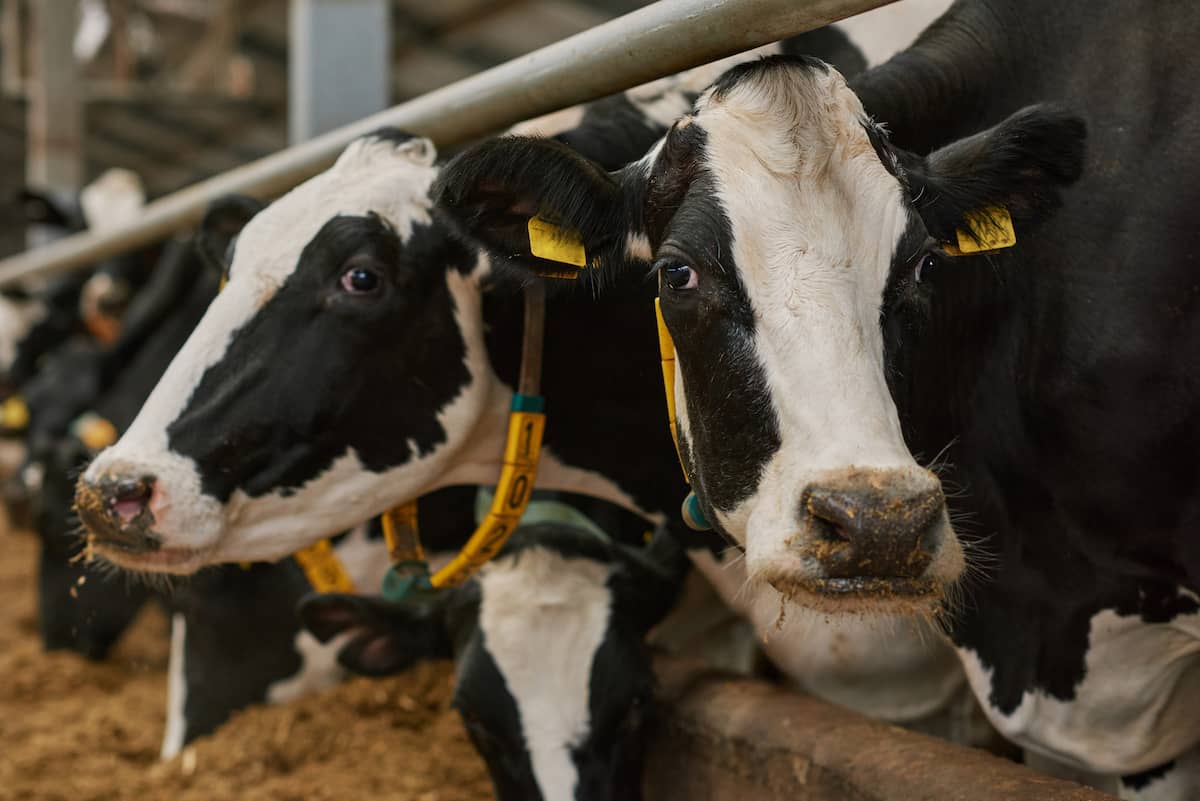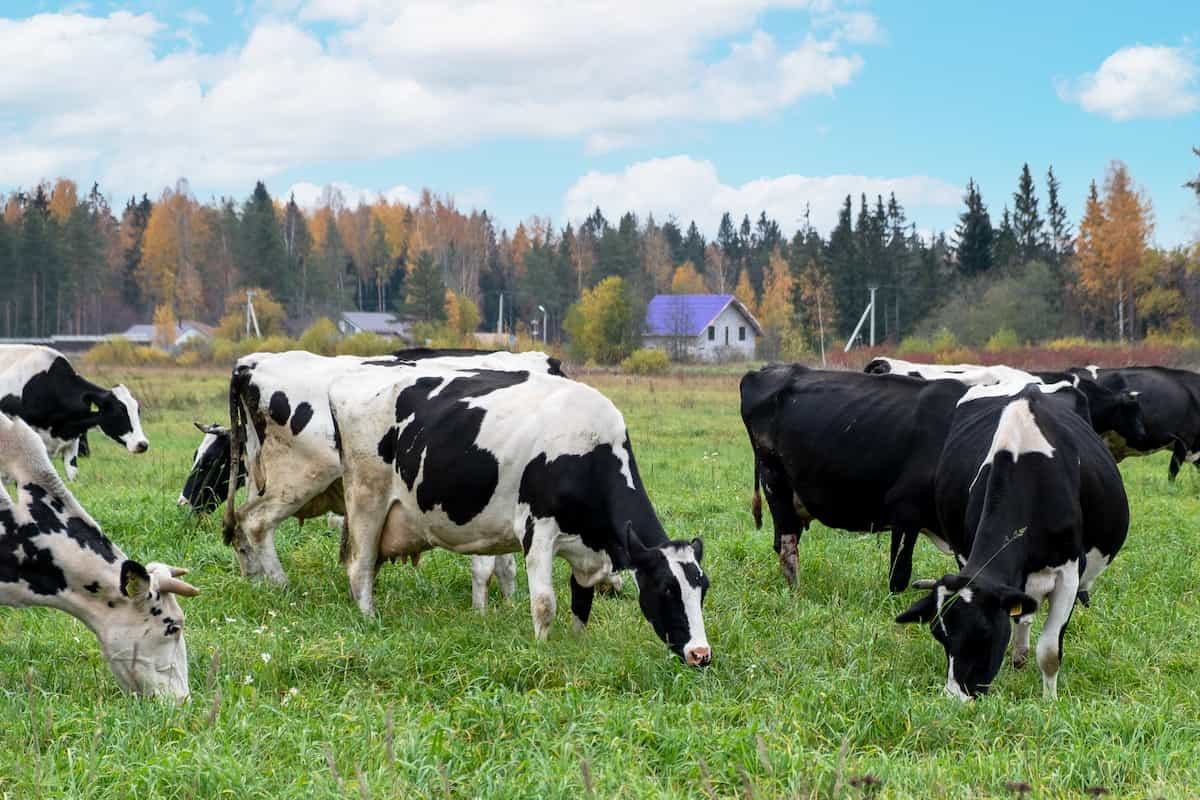Cattle farming in Bangladesh plays a significant role in the country’s economy and food security. With a rapidly growing population and an increased demand for protein, the sector has seen steady growth over the years. Below we learn the cattle farming business plan for Bangladesh, the best cow breeds in Bangladesh, current practices, challenges, and future prospects of Bangladesh.

Cattle Farming in Bangladesh
Cattle Farming Business Plan for Bangladesh
A cattle farming business plan in Bangladesh should begin with a clear understanding of the local market demand for meat and dairy products, the existing supply chain, and competition. Identifying a target market, such as local consumers, restaurants, or export markets, is crucial for developing a tailored marketing strategy. The business plan should also consider the availability of resources such as land, labor, feed, and veterinary services and the potential for securing government support, subsidies, or financing.
The operational aspect of the business plan should outline the specific cattle farming system to be adopted, whether traditional, semi-commercial, or commercial, and include details on the choice of cattle breeds, herd size, and breeding methods. It should also address critical aspects such as feed management, disease control, waste disposal, and implementing sustainable practices.
Cattle Farming Breeds in Bangladesh
Cattle farming in Bangladesh primarily involves indigenous breeds, known for their adaptability to local conditions but characterized by low milk and meat yields. The most common indigenous breeds include the Red Chittagong, Pabna, and Sahiwal. To increase production and fulfill the expanding need for animal protein,
Holstein Friesian, Jersey, and their crosses with indigenous breeds have been promoted recently. Introducing these improved breeds through artificial insemination, cross-breeding, and selective breeding programs can significantly impact the sector’s growth and contribute to the country’s food security and economic development.
Current Practices in Cattle Farming
Traditional Farming Systems
Most cattle farming in Bangladesh is still carried out using traditional methods, with small-scale farmers raising cattle primarily for draught power and manure and secondarily for milk and meat. These farmers often lack access to modern technologies, improved breeds, and veterinary services, resulting in low productivity and high disease prevalence.
Semi-commercial Farming Systems
These systems involve the integration of cattle farming with crop production, where cattle are reared for both agricultural purposes and commercial milk or meat production. Farmers in this category usually have better access to improved breeds, veterinary services, and feed resources, leading to higher productivity and improved animal health.
Commercial Farming Systems
Commercial cattle farms focus exclusively on producing meat or milk, with some large-scale operations housing hundreds or thousands of animals. These farms utilize modern technologies, improved breeds, and professional management practices to achieve high productivity and meet the growing demand for animal protein.
In case you missed it: How to Start Brown Swiss Cow Farm in 10 Steps: Characteristics and Business Plan

Challenges Faced by the Cattle Farming Sector
- Feed resources: The availability of quality feed resources is a major constraint in the sector. Due to the high competition for land with crop production, there is limited availability of grazing lands and a lack of adequate fodder cultivation. This often leads to poor nutrition for cattle, resulting in low productivity and increased susceptibility to diseases.
- Breeding and genetics: Most cattle in Bangladesh are indigenous breeds with low milk and meat yields. The increasing demand for animal protein necessitates the introduction and widespread adoption of better breeds.
- Animal health and disease management: Disease prevalence is high among cattle in Bangladesh, with common diseases including Foot and Mouth Disease (FMD), mastitis, and parasitic infections. The lack of access to quality veterinary services, especially in rural areas, exacerbates this issue.
- Marketing and processing facilities: The absence of well-organized markets and processing facilities often results in farmers receiving low prices for their cattle products. This discourages investment in the sector and stifles growth.
- Training and extension services: Many cattle farmers lack adequate knowledge and skills in modern cattle management practices, resulting in low productivity and high losses. There is a need for improved training and extension services to help farmers adopt better management practices and increase their income.
Future Prospects and Recommendations
Despite the challenges, the future of cattle farming in Bangladesh is promising. With a growing population and increased demand for animal protein, the sector has the potential to contribute significantly to the country’s food security and economic growth. To fully realize this potential, the following recommendations should be considered:
- Improve feed resources: Encourage the cultivation of high-quality fodder crops and promote efficient utilization of agricultural by-products for cattle feed. This can be achieved through research, extension services, and government support.
- Breeding and genetics: Introduce and promote improved cattle breeds through artificial insemination, cross-breeding, and selective breeding programs. This will help enhance the productivity of the sector and contribute to meeting the growing demand for animal protein.
- Enhance animal health and disease management: Strengthen veterinary services by increasing the number of trained veterinarians, improving diagnostic facilities, and promoting preventive healthcare measures. Disease surveillance and control programs should be implemented to reduce the prevalence of common diseases.
- Develop marketing and processing facilities: Establish well-organized markets, processing facilities, and cold chain infrastructure to ensure farmers receive fair product prices. This will incentivize investment in the sector and promote growth.
- Strengthen training and extension services: Improve access to training and extension services, particularly for small-scale farmers, to help them adopt better management practices and enhance their income. This can be achieved through collaboration between government agencies, non-governmental organizations, and private sector stakeholders.
- Promote sustainable cattle farming practices: Encourage adopting environmentally friendly and sustainable practices, such as efficient waste management, reduced use of antibiotics, and responsible use of natural resources.
- Foster public-private partnerships: Encourage partnerships between the government, private sector, and international organizations to mobilize resources, technical expertise, and financial support for the development of the cattle farming sector.
- Improve policy and regulatory framework: Review and update policies and regulations related to cattle farming to ensure they are conducive to the growth and development of the sector. This includes measures to improve access to credit, land and other resources for cattle farmers.
In case you missed it: How to Start Dairy Cow Farming in 10 Steps: Business Plan, Management, and Care

Conclusion
In conclusion, Bangladesh’s cattle farming has enormous growth and development potential. The sector can contribute significantly to the country’s food security, economic growth, and overall development by addressing the challenges and implementing the recommendations outlined above. Bangladesh can become a major player in the global livestock industry with appropriate government support and private-sector investment.
- Feed Your Flock for Less: Top 10 Tips to Save on Chicken Feed
- Ultimate Guide to Ossabaw Island Hog: Breeding, Raising, Diet, and Care
- Hatching Answers: The Top 10 Reasons Your Chickens Aren’t Laying Eggs
- Eggs and Economics: Breaking Down the Cost of Raising Backyard Chickens
- Defend Your Greens: Proven Methods to Keep Iguanas Out of Your Garden
- Ultimate Guide to Cinnamon Queen Chicken: A Comprehensive Guide for Beginners
- Ultimate Guide to California Tan Chicken: Breeding, Raising, Diet, Egg-Production and Care
- Ultimate Guide to Marsh Daisy Chicken: Breeding, Raising, Diet, and Care
- 10 Types of Chicken Farming Businesses You Can Start for Profits
Necessary information is available. Hope more writing on Cattle Farming and Economic interpretation in the case of Bangladesh.